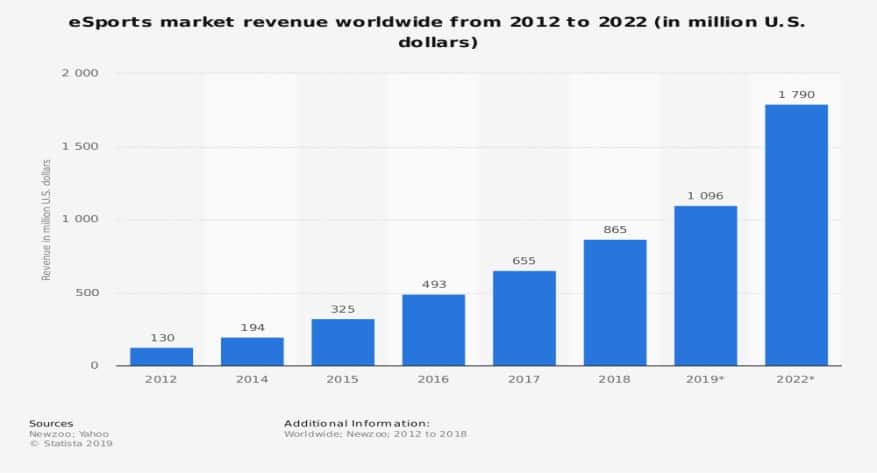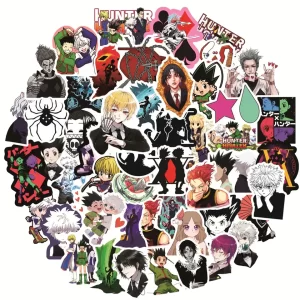The dust has finally settled on E3 and it seems everyone (and their dog) is continuing the trend of adding a battle royale or esports compatible mode to their games. I mean, what more could us gamers ask for, right? Either way, whether this is something we want or not is not the problem. The problem comes from major news outlets not covering these eSports events nearly as seriously as they do traditional sports.

Here in the UK, outlets such as BBC Sport and Sky Sports have since made changes to adjust for the shift in popularity of esports, with Sky Sports even headlining the ePremier League alongside other major sporting events on their primary sports channel. However, this is more a case of being too slow to react as opposed to adjusting with the times. Many major news outlets want to start covering esports, but don’t really know where to start.

Donovan “F2Tekkz” Hunt celebrates winning the ePremier League. Source: Naomi Baker/Getty Images.
Take the news of Enzo Bonito, a pro esports player, besting the time of an ex-Formula E driver on a real-life racing track. None of the big news outlets, especially the sports ones, even mentioned this in their coverage. Whilst we at Culture of Gaming can proudly say we’re one of the few outlets to break news of this. Surely it is not enough.
Wimbledon match between Roger Federer and Rafael Nadal, all bouncing to the action. And you get some idea of the scale of a major esport event. Obviously, or rather unfortunately, without the strawberries and cream.

ESL One is one of the oldest and largest esports events. Source: ESL One.
Even after all this, news outlets are still not entirely sure whether they should define esports as sport. According to the Council of Europe charter on sport,
“Sport means all forms of physical activity, which through casual or organised participation, aim at expressing or improving physical fitness and mental well-being, forming social relationships or obtaining results in competition at all levels.”
With the oldest definition in the English language stating, “anything humans find amusing or entertaining”.
Does esport not match this definition? If not, then what is the defining factor between a technology heavy sport such as Formula 1 and the pub-favourite darts? One primarily uses technology as the basis for competition whilst the other hardly involves any physical activity. But many consider both sport in their own right. And so should esports.
Are We Hungry For Esports?
As we’re all aware by now, the crowds at esports events are mahoosive. But, by looking at the bigger picture, does this necessarily correspond to viewership outside of these events?
All we need to do here is look at live viewing figures across streaming services such as Twitch or YouTube. In 2018 alone, esports events drew in an estimated 165 million viewers across these platforms on a consistent basis. With Newzoo predicting that the number of regular viewers will grow to 250 million by 2021, all thanks to an annual growth rate of approximately 14%. Putting all this into context, the biggest sporting event of 2018, The FIFA World Cup, had a global average of 191 million viewers per game.

Fans gather to watch The 2018 FIFA World Cup opening match. Source: Dmitri Lovetsky/AP Photo.
Additionally, the core demographic of esport audiences are of the Millennial and Gen Z generation, with GlobalWebIndex recognising that 16-34 year olds account for 73% of viewership. This is a very coveted and sought after age bracket for news outlets, especially for those lucrative advertisement deals.
In fact, Statista say total viewership figures have grown from 1.3 billion hours in 2012 to 6.6 billion hours in 2018, correlating with the economic growth of esports. This also correlates with the economic growth of esports. By using viewership, prize money, and advertisement metrics, Statista estimates that esports revenue will grow from 130 million in 2012 to 1.79 billion by the end of 2019. This drastic growth occurring in just under 7 years demonstrates that esports will continue going from strength to strength. Surely this means that esports is the ripest market for news coverage right now.

Statista global esports market revenue figures. Source: Statista.
I Present Thee Esports
Most news outlets will question how to best present esports news. Is it in the form of an article? A video piece? Or do we just talk about it in radio format? However, as mentioned earlier, it appears the beginnings of a solution for presenting esports are already in place.
A recent example of this can be seen in Ginx TV‘s rise from relative obscurity to becoming one of the leading esports outlets. Ginx TV create their own coverage with talk shows, debates, and documentaries. as well as showcasing content from major esports events, 24/7. Thanks to this type of scheduling, they have acquired a global reach across 50 countries, suiting the differing esports culture in every continent. By learning from this wave of new media, major outlets can better understand the best ways to present esports.

Ginx TV covers esports in a variety of ways. Source: Ginx TV.
News outlets could start off showing the esports equivalent of the sports coverage that they already show. Most sports will have a video game associated with it which will help to reach an audience already familiar with the esport’s competitive aspects. This doesn’t even have to be live coverage to begin with, and can be used as a precursor to gauge interest, whilst drumming it up at the same time.
Alongside coverage, news outlets could also present news-related pieces in the same way they are already doing with traditional sports. Esports are easier to showcase than outlets seem to think as they can be covered in a multitude of ways. Whether that be in the form of an article, a video piece, in radio format, or even a combination. All are a successful, tried-and-tested means of covering sports. If it isn’t broke, why try and fix it?
Esports in 2023
Esports, or competitive video gaming, are currently growing in popularity and show no signs of dying anytime soon. Esports have been on a steady rise in recent years, with more and more people tuning in to watch professional players compete in popular games like League of Legends, Fortnite, and Overwatch.
According to a report by Newzoo, a leading provider of market intelligence in the gaming industry, the global esports market is expected to reach $1.08 billion in 2023, up from $947.1 million in 2020. The report also estimates that the global esports audience will reach 646 million by 2023, up from 380 million in 2018.
Esports are also gaining more mainstream recognition, with major brands and organizations investing in the industry. For example, the NBA has launched its own esports league, and major companies like Coca-Cola, Intel, and Red Bull have sponsored esports tournaments and events.
Esports Predictions for 2023
In previous years, we’ve heard bold predictions that have come true, like Tundra Esports winning The International. In this year’s edition, you can expect a mix of optimism and pessimism, along with hot takes on everything from the macroeconomic environment to the future of the industry.
Are you curious about what’s in store for the esports industry in 2023? Then keep reading. This is part two of our industry series, and you won’t want to miss it. Also, be sure to check out what everyone predicted for 2022 to see how their predictions panned out.
As we start the new year, we can’t ignore the fact that the end of the previous year was tough for many companies. We saw job cuts and company closures across the board, and we can’t help but wonder how the industry’s trajectory will change over the next 12 months. So, we asked industry stakeholders to share their thoughts.
Some predict that the upcoming recession will pose challenges to the current esports business model. Others expect more organizations to grow and expand their brands to the point where they can exist independently of the games they are associated with. Meanwhile, some predict that organizations will use 2023 as a time to focus on strategic growth.
Despite the challenges, many are optimistic about the future of the industry. As esports continues to grow with large audiences, it’s not going to stop anytime soon. However, the industry needs to find ways to redistribute the revenue properly so that all stakeholders can continue to grow and make it sustainable for everyone.
As we navigate the challenging economy, it’s become more complicated to access capital on the market. And since esports teams have still not found the proper path to profitability, we must collectively learn how to do better with fewer resources. That is why 2023 may be the age of maturity for esports organizations, where they learn to solve the equation of doing better with less.
In Conclusion…
It is a shame then that news outlets are struggling to adopt esports in what is, essentially, an astronomic economy. It has the potential for mass reading and viewing figures, but only if given the right push.
Thankfully though, these news outlets aren’t set in their ways. And are actively looking to implement esports into their flow of sports coverage. Whether this be currently or by having plans set in place for the future. They are slowly figuring this out, and hopefully sooner rather than later.
Stay tuned to Culture of Gaming for more esports related content, like our article covering the Esports Initiative at UCS! Be sure to let us know your thoughts in the comments below!













